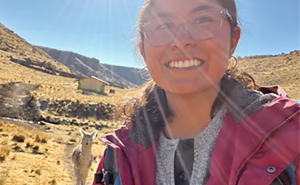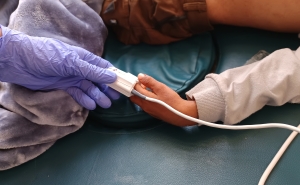Is Deadly Candida Auris a Product of Global Warming?
Higher global temperatures may have adapted this mysterious, disease-causing fungus for growth in warm-blooded mammals
A drug-resistant fungus species called Candida auris, which was first identified ten years ago and has since caused hundreds of deadly outbreaks in hospitals around the world, may have become a human pathogen in part due to global warming, according to three scientists led by a researcher at the Johns Hopkins Bloomberg School of Public Health.
C. auris was first isolated from the infected ear of an elderly patient in Japan in 2009, and within a few years caused hospital outbreaks in many different parts of the world. Between 30 and 60 percent of patients diagnosed with invasive C. auris infection have died. C. auris’s sudden emergence as a human-infecting pathogen is as mysterious as it is alarming, for it happened simultaneously among several distinct families or “clades” of this fungus that exist separately on different continents.
The scientists, in their paper published July 23 in the journal mBio, suggest that this global transformation of C. auris into a deadly pathogen may be due to global warming, which could have forced C. auris clades around the world to adapt to higher temperatures. That adaptation would have made it easier for this microbe to infect humans, whose relatively warm core temperature of 98.6 degrees Fahrenheit (37 degrees Celsius) normally serves as a “thermal barrier” against fungal invasion.
“We think that C. auris may be the first example of a fungal species that has jumped the thermal barrier due to adapting to global warming,” says lead author Arturo Casadevall, MD, PhD, the Alfred and Jill Sommer Professor and Chair of the W. Harry Feinstone Department of Molecular Microbiology and Immunology at the Bloomberg School.
Microbiologists estimate there are more than a million fungal species. However, most known species are adapted for living in soils, on trees, and in other places in the natural environment, where temperatures on average are much cooler than mammalian core temperatures. Only a tiny proportion of fungal species can infect humans, and dangerous internal infections with fungi typically occur only in people with very weak immune systems.
Casadevall, a Bloomberg Distinguished Professor, warned in a paper in 2010 that global warming could trigger the emergence of many more fungal pathogens. In the new paper, he and his colleagues hypothesize that C. auris is the first of these.
Analyzing the temperature range for C. auris and a few dozen species that are its nearest fungal relatives, the scientists found that the new pathogen can grow at higher temperatures than most of these near-relatives, hinting that it may have acquired its thermal tolerance only recently. They also cited a previous finding from Casadevall’s laboratory that some other fungal species in a large culture collection had begun to adapt to global warming by increasing their tolerance for higher temperatures.
Proving that global warming spurred the emergence of C. auris as a human pathogen will be difficult, but Casadevall and colleagues argue that this possibility—and the possibility that other new fungal pathogens will emerge—must be borne in mind as the global average temperature continues to rise.
“Right now fungal diseases are usually not reportable,” Casadevall says. “So we need better surveillance of these infections in humans—and even in other mammals, where the first warnings of new fungal pathogens might occur.”
C. auris strains usually have considerable resistance to antifungal drugs, and some resist all the usual treatments. How this resistance arose is another mystery—many scientists suspect that the widespread agricultural use of fungicides was the key factor. In any case, it underscores the need for better reporting of serious fungal infections and for new antifungal drugs, says Casadevall.
“On the Emergence of Candida auris: Climate Change, Azoles, Swamps, and Birds” was written by Arturo Casadevall, Dimitrios Kontoyiannis of the University of Texas MD Anderson Cancer Center, and Vincent Robert of the Westerdijk Fungal Biodiversity Institute in the Netherlands.
# # #
Media contacts for the Johns Hopkins Bloomberg School of Public Health: Barbara Benham at 410-614-6029 or bbenham1@jhu.edu and Robin Scullin at 410-955-7619 or rsculli1@jhu.edu.





